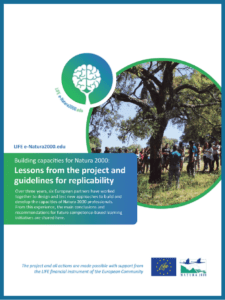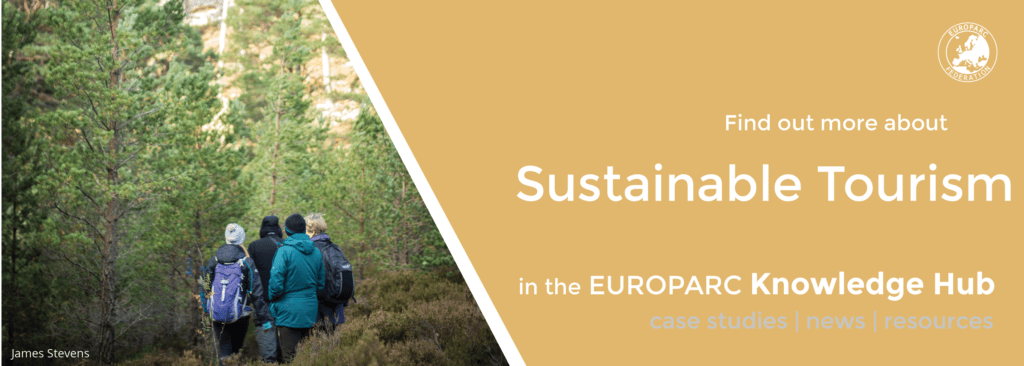Final outputs of the Sustainable Tourism Training for Tomorrow project
For the past three years, the Erasmus+ Project “Sustainable Tourism Training for Tomorrow” (STTfT) has worked on building the capacity of Protected Area stakeholders in the field of sustainable tourism. Now the project is coming to an end and the final outputs were delivered: a Training Toolkit and the Recommendations for Policy and Practice report. You can learn more about them here:
Training Toolkit
One of the main outcomes of the STTfT project was the free online learning platform. Here, users can learn more about key training needs that are currently experienced by professionals working on sustainable tourism in Protected Areas. The platform provides 9 learning modules in 4 languages (English, French, Italian and Spanish), based on the key topics of the European Charter for Sustainable Tourism. To complement this online training platform, a Training Toolkit was developed.
The toolkit has been created to provide supporting materials and resources for those who wish to provide learning experiences on Sustainable Tourism in Protected Areas. It was designed to support different levels of experience in training, facilitation or capacity-building. As such, it provides both introductory guidance for those who never developed or delivered training, as well as a collection of resources that both experienced and inexperienced trainers can use. Like the online learning platform, the toolkit is available in English, French, Italian and Spanish.
The Toolkit consists of two parts. Part A provides a brief introduction to key concepts and areas that a trainer needs to consider when preparing a training programme or activity, and signposts the reader to useful complementary resources to explore those concepts in more depth. The resources provided comes largely from the EUROPARC led “Train the Trainer” Moodle course that took place online at the beginning of this year.
Part B provides a compilation of 40 activity outlines aligned to the 9 learning topics of the online training platform. These aim to provide practical guidance for the running of specific training activities that explore topics, concepts and case studies covered in the platform.
Taken together, both Parts A and B of this Toolkit can help anyone learn how to prepare for, organise and facilitate participatory capacity-building sessions with different stakeholders in Protected Areas.
You can find the Training Toolkit here
Recommendations for Policy and Practice
Another outcome of the STTfT project is the’ Recommendation for Policy and Practice’ report. It provides a summary of the outputs, insights and lessons learned throughout this project. These aim to serve as recommendations for practitioners and policy-makers, that can then build on the project’s deliverables to continue to develop skills for sustainable tourism in European Protected Areas and beyond.
The report is structured along the following main sections, that aim to answer the corresponding key questions:
- Why the need for this project;
- What are the training needs on sustainable tourism in Protected Areas;
- How to accelerate the development of sustainable tourism skills in Protected Areas;
- What recommendations can be made, from this project
You can find the Recommendations Report here
Training for Tomorrow
EUROPARC was incredibly happy to have had the chance to participate in this project that could draw from the experiences of the European Charter for Sustainable Tourism. We believe that the importance of online training will continue to grow, especially accelerated due to the Covid-19 pandemic. The free online learning platform will stay available, and we encourage everyone that wants to develop sustainable tourism in Protected Areas to make use of all it has to offer (this includes videos, case studies and quizzes), because training for the sustainable tourism of tomorrow, starts today.
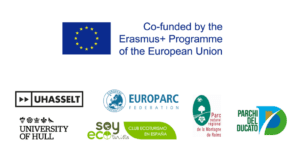
LIFE e-Natura2000.edu: Lessons from the project and guidelines for replicability
For the past three years, six partners from across Europe have joined their forces on a LIFE Preparatory Project ‘LIFE e-Natura2000.edu’ in order to build and develop the capacities of Natura 2000 professionals. Their experiences and the results of their work and are now gathered in “Guidelines for replicability and recommendations for future capacity building”, a technical report which proposes useful solutions for future competence-based learning initiatives.
About the project
LIFE e-Natura2000.edu (or LIFE.edu for short) ran from April 2018 to July 2021. During that time, the project’s partners explored the potential of developing new approaches and integrating innovative learning methods to improve knowledge and capacity amongst Natura 2000 managers in both public and private land. The main aim of the project was to produce and test a flexible mix of blended learning tools and methods, designed to build and develop the capacity required for effective Natura 2000 management practices.
By taking a competence‐based approach, the project enabled peers to connect and learn about what managers need to know and be able to do to improve their practical management effectiveness. This approach has established a lasting legacy: the evaluated results will be used to develop replicable and up‐scalable capacity building actions well into the future.
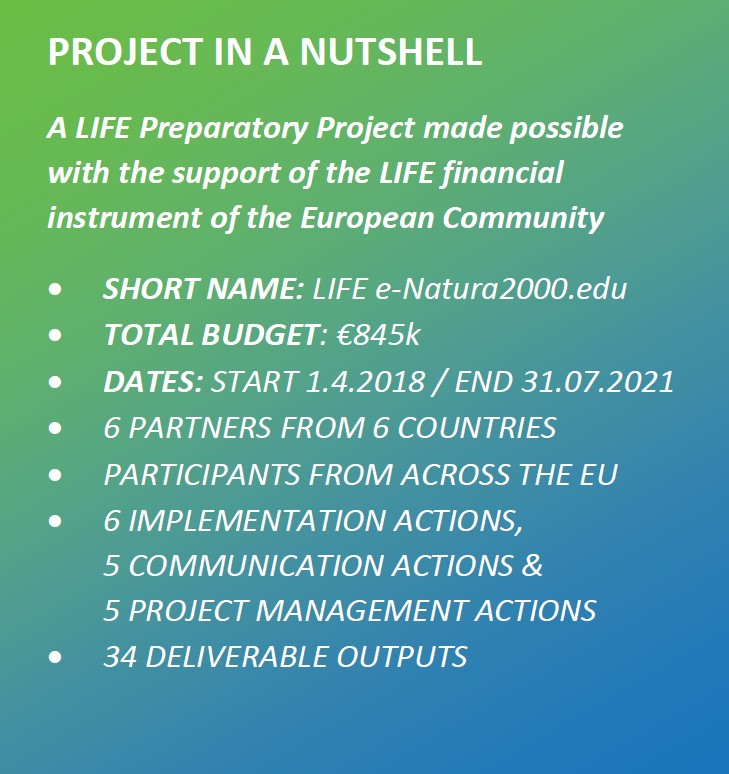
Problems addressed
Recent studies have highlighted important gaps in terms of practical knowledge and capacity to implement Natura 2000 and the two underpinning legislations, the Birds and Habitats Directives. Several problems and knowledge gaps are common among all types of Protected Areas worldwide, while other capacity weaknesses are specific to the characteristics of Natura 2000. In particular, in relation to Natura 2000 management, the 2016 Fitness Check reported that there is limited expertise, insufficient staff resources and inconsistent standards in relation to the specific environmental procedures and quality of impact assessments required under the Directives.
Project results
Across the full range of implementation, communication and management actions, the project has achieved significant results which include:
- Identifying specific core functions and capacity development needs for all Natura 2000 managers;
- Developing a new Natura 2000 online Training Needs Analysis tool to identify individual competencies and capacity building professional development needs for Natura 2000 managers;
- Delivery of three core courses in three different languages, designed to provide competence-based learning in areas identified as being specifically required by Natura 2000 managers;
- Design and delivery of a virtual summer school;
- Development of an App for Natura 2000 managers and stakeholders of Natura 2000 management.
- Participation in a wide range of networking events to present the project and share capacity building experiences with diverse actors at national, (biogeographical) regional and international levels.
- Comprehensive progress monitoring, administration and management reporting systems developed and applied by the project partners.
The Training Needs Assessment tool
The Training Needs Assessment (TNA) tool was designed to help individual Natura 2000 managers and other staff members of various entities that have Natura 2000 management responsibilities to assess their competencies and learn about their priority capacity development needs.
By using the tool, all Natura 2000 managers could self-assess their training needs and use the results to plan their future professional development actions.
Based on the results from testing, the project partners have shown that the LIFE.edu online TNA tool has a lot of potentials to help European and national institutions in developing capacity building plans and coherent programmes for Natura 2000 managers operating at all levels.
Delivering the courses
Life.edu delivered three courses, which constitute a core component of the whole project
- Course I, Applied Conservation Biology, led by Propark and addressed mainly to Romanian Natura 2000 managers (in Romanian).
- Course II, Building Alliances for Natura 2000 Management, led by FUNGOBE and addressed mainly to Spanish Natura 2000 managers (in Spanish).
- Course III, Competent Inclusive Communication, led by EUROPARC and pan European in its scope (in English).
Online or face-to-face?
The impact of COVID-19 restrictions made clear that flexible and mixed strategies are required to overcome unexpected factors that can occur when planning and delivering capacity building courses in a variety of settings. Most of the activities that had been initially planned as face-to-face events were redesigned and transformed into online formats.
Despite the Covid-19 outbreak, the pace of delivery of tasks and activities was fine for 86% of participants.
Smartphone App
The project’s new ‘eNatura2000’ App was conceived as one of the high potential learning and networking tools to be designed and delivered during the project.
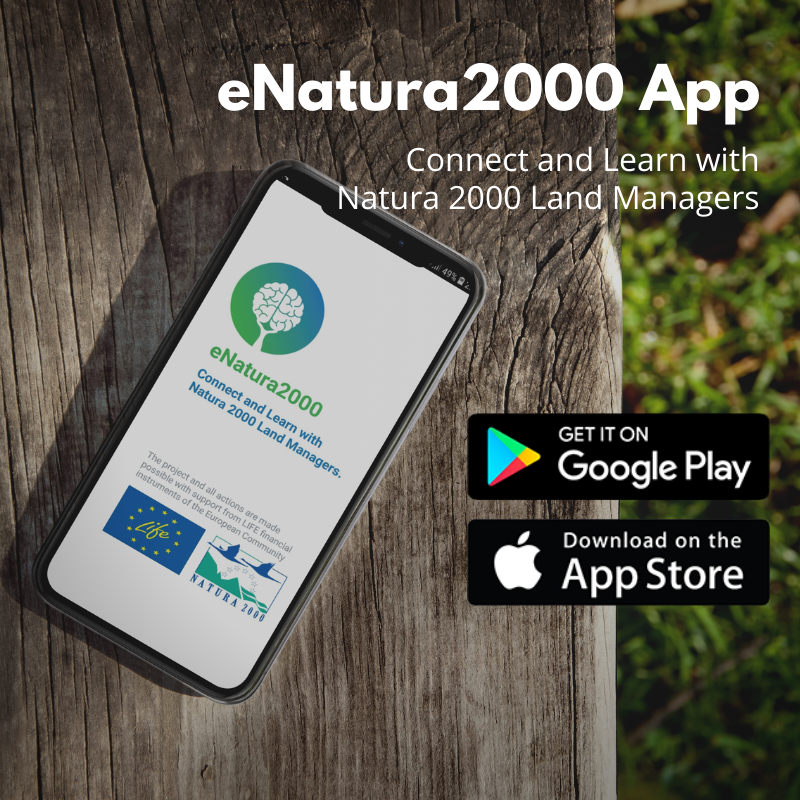
eNatura2000 App
The app is available on Google Play and App Store! DOWNLOAD IT NOW!
Apart from networking, the app offers a wealth of resources on Natura 2000 management. Find out more about the LIFE Programme, discover communication strategies that you can apply when working with stakeholders, or more information about the LIFE e-Natura2000.edu project. Additionally, every week new articles are published with interesting information in the field of nature conservation and management.
Summer school
The summer school ‘Natura 2000 management in practice’ lead by the University of Padova’s project partner TESAF was designed to address several technical management issues in more depth.
Due to the pandemic, the LIFE.edu ‘Virtual Summer School’ programme used new materials, such as virtual field trips (demonstration videos) about the application of specific management approaches (e.g. for setting conservation objectives or reference values) and case studies. This created the opportunity to test how typically face-to-face taught topics can be presented online in a digital setting, again by means of a dedicated Moodle.
Partners’ knowledge gains
As part of the project’s reflection and evaluation processes, all partners identified the following main impacts:
- The identification of competencies needed for the management of Natura 2000 sites and to provide a very practical training needs assessment tool for Natura 2000 managers.
- The demonstration of the need for and value of competence-based learning opportunities for Natura 2000 professionals through innovative learning methods and formats
- The development and testing of new tools for online learning that would improve and increase capacity building opportunities
Other important impacts cited by the partners are:
- The creation of momentum for and demonstration of the value of a larger scale follow-up project.
- The strengthened link between academy and professionals
- The extension of partners networks (within partners and with participants in the different activities)
- Increased knowledge regarding Natura 2000 and its challenges among all stakeholders (partners, participants, landowners, etc.)
What worked well?
- Project’s coordination and partner’s cooperation.
- The adaptability, flexibility, and problem-solving creativity of project partners in responding to the COVID-19 situation.
- The inclusive approach to recruitment of project participants for the core groups, represented in terms of diversity of professional backgrounds and experience levels, national and regional locations, types of organisations (public and private, GO and NGO), gender and age.
- The participatory development of the list of Natura 2000 competencies with the project partners.
- Flexible design and delivery of the courses
- Participants’ active involvement and personal commitment whilst dealing with COVID-19 changes in their professional and personal lives.
- Development of the first App on Natura 2000 with all the planned parts and favourable reviews.
If you would like to get more detailed insight and guidance through all stages and milestones of the LIFE.edu project, download the full report here:
Conclusions and recommendations
The main conclusion of the project is that it has evidenced the need opportunity and merits of developing dedicated capacity building programmes tailored for Natura 2000 managers. These programmes need to be designed to support the achievement of EU priorities for nature management.
As a direct outcome of LIFE.edu, the value of creating continuous professional development programmes for nature managers, directly linked to EU priorities and that actually meet learning needs, is beyond question.
Download the full PDF version of the document here: Guidelines for replicability and recommendations for future capacity building
and the summary version here: LIFEedu Summary Replicability Guidelines
New members of the ECST Evaluation Committee!
The European Charter for Sustainable Tourism (ECST) Evaluation Committee reviews all Protected Areas that apply. The committee is made up of sustainable tourism experts. In 2021 two new members joined.
The European Charter for Sustainable Tourism…
… is celebrating its 20 year anniversary in 2020! In these 20 years many Protected Areas have joined the programme to become sustainable tourism destinations. The ECST Evaluation Committee is the final “stop” on the road to becoming a Sustainable Tourism destination for Protected Areas. They evaluate the application and make the final recommendation to the EUROPARC Council whether an area should receive the Charter Award or not.
This year some changes happened within the Committee: Vittorio Ducoli and Chair Patrizia Rossi left. Richard Denman now is the new Chairman and two new members joined: Jimena Castillo and Tina Müller. You can get to know them a bit better here:
Jimena Castillo…
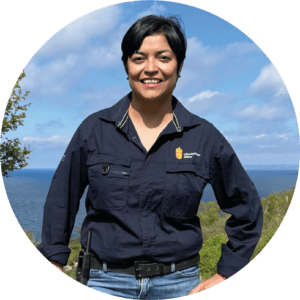
… was born in Costa Rica, but grow up in Honduras. As true “citizen of the world”, she has been living in Sweden since 2011. She studied Biology and Research Applied to Monitoring and Project Evaluation.
Throughout her career, she collected a combination of experiences within international cooperation, nonprofit organizations, and Governmental institutions.
Nowadays she works for the County Administrative Board of Scania as Environmental Projects Coordinator. She is responsible for the Certification Process of Kullaberg Nature Reserve as a Sustainable Tourism Destination, which is the first Protected Area certified by EUROPARC in Sweden.
Additionally, she is the Project Manager of “Together We Can”, a project designed to facilitate the implementation of the 5 years action plan for sustainable tourism. They are currently developing a very interesting model of cooperation with other governmental organizations, private and touristic sector and stakeholders.
Tina Müller…

… was born in Bern Switzerland and finished her first Master’s in economy, tourism and anthropology at the Universities of Bern and Berlin (Germany) in 2004. She did her anthropology field study on the Aborigines whilst travelling in Australia for a year.
After finishing her studies, she worked as a scientific assistant at the department of recreation and tourism at the University of Bern. Interested in the practical field of tourism, she changed jobs to become manager of Delémont’s youth hostel (French part of Switzerland). During that time, she finished her second Master’s in “Mediation of European Nature and Culture Heritage” at the University of Rennes (France).
Since 2010 she is the head of tourism and since 2016 Representative General Manager at the Swiss Parks Network where she is in charge of coordinating and developing tourism in the Swiss parks, as well as cooperations on a national and international level. Additionally, in 2016, Tina Müller received the “Tourism for Tomorrow Award” for the Swiss parks – a nomination for Best Practice destinations in sustainable tourism worldwide. In 2020, she was elected onto the board of the Swiss Tourism Federation.
EUROPARC wants to extend a warm welcome to Jimena and Tina. We are excited to have these Sustainable Tourism experts on board!
You can find the entire ECST Evaluation Committee here, however, please note that this page is still under construction.
The different futures that lie ahead
© United Nations Climate Change
Article issued by Ignace Schops, president of the EUROPARC Federation.
“Code Red for humanity”
That’s how Antonio Guterres, Secretary-General of the UN, describes the new report of the International Panel on Climate Change (IPCC). The IPCC report is considered a guideline for the climate policy of governments worldwide. The scientists cite 14,000 studies, most of which are new.
The climate is changing at a tremendous rate and it is undeniable that mankind is the cause of this. Only if the emissions of greenhouse gases decreases significantly in the coming decades, can the warming remain limited to 2 degrees, as agreed in the Paris Agreement.
Let me refresh our minds. In Greece, two hundred fires started in ten days. Turkey is also on fire and earlier fires raged in the western United States, Canada and Siberia. In Germany and Belgium, among other countries, flooding cost the lives of more than two hundred people. In China and India, too, tens of thousands had to be evacuated because of the rising water. And today, the Amazon forest emits more CO2 than it stores.
NASA figures show that in 2019, 2020 and this summer, the northern hemisphere had the hottest July on record. Earlier, the UN’s World Meteorological Organisation (WMO) also concluded that the climate crisis had ‘ruthlessly intensified’ by 2020.
Sponge, fridge, health centre
The effect on biodiversity is unprecedented: habitats and species are vanishing in only a few decades. As a global human society, we are the only ones to save our planet. For ourselves, the next generations and all living creatures living on it.
Natural ecosystems and protected areas play “again” a key role: they prevent urban regions from flooding because they store mass volumes of water like a sponge; natural ecosystems and Protected Areas have huge cooling effects and temper heatwaves.
They are our natural refrigerators. And last but not least Protected Areas provide all the ingredients for healing ourselves and function as the cradle for restoring our planet.
We are in the midst of a planetary emergency, facing climate, biodiversity and health crises. By addressing these as one integrated challenge we can bring back the balance between people, planet and prosperity.
A new financial bazooka
The extreme weather and the collapsing natural ecosystems are increasing the pressure on world leaders who will gather in Glasgow this autumn for a new UN climate summit, the twenty-sixth (COP 26) since 1995. There, they will be confronted with the first part of a new UN climate report that does not bode well.
The next Climate COP in Glasgow will be decisive. Failure means disaster. We know the reasons for climate change, we know how to solve them and we are not acting significantly. As we all know the real decision will be about the willingness to finance. Therefore we need a new financial bazooka and that can be found in a global agreement of bringing all the necessary climate investments “outside” the country budgets. It is a fair solution and socially balanced for all. The national debts will increase, but that can easily be solved over the years.
From 1,5 to 5°C global warming, different futures lie ahead. It is our choice. Believe me, it is better to have a planet in balance than a budget that is temperately out of balance. Let’s not destroy what keeps us alive.
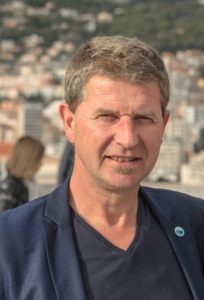
Article issued by Ignace Schops
